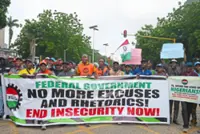I HAVE dedicated almost 17 years to the conservation of biodiversity in Sabah. During this time, I’ve been privileged to contribute to safeguarding the wild Bornean elephant, the smallest among Asian elephants. It’s worth emphasising that Bornean elephants are not dwarf elephants.
There are only about 1,500 such wild elephants remaining, and these are found only on the east coast of Sabah.
Already a subscriber? Log in
Save 30% OFF The Star Digital Access
Cancel anytime. Ad-free. Unlimited access with perks.





